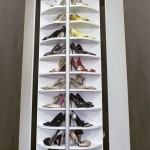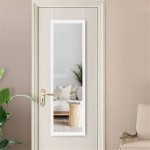How to Stick a Mirror Wall
A mirror wall can transform a space, adding dimension, light, and a touch of glamour. Whether you're creating a stunning accent in your living room or expanding the perceived size of a small bathroom, installing a mirror wall is a project that can be accomplished with careful planning and execution. This article will guide you through the process of sticking a mirror wall, providing a step-by-step approach and addressing common challenges.
1. Planning and Preparation
Before embarking on the installation process, meticulous planning is crucial for a successful outcome. This includes:
a. Choosing Mirrors: Decide on the size, shape, and style of mirrors that will best suit your vision. Consider using a combination of sizes and shapes for visual interest. Ensure the mirrors are lightweight, as they will be adhered to the wall.
b. Measuring and Layout: Measure the wall space where the mirror wall will be installed. Design a layout plan, sketching out the arrangement of the mirrors. Use masking tape to outline the mirror positions on the wall for a visual guide.
c. Surface Preparation: The wall surface must be clean, dry, and smooth. Remove any dust, dirt, or debris. If the wall has unevenness or imperfections, use spackling compound to create a smooth surface.
d. Choosing Adhesive: Select a strong, heavy-duty adhesive specifically designed for attaching mirrors. Consult with hardware store professionals for recommendations based on the weight of the mirrors and the wall material. Ensure the adhesive is compatible with your wall surface.
2. Installing the Mirror Wall
Once your planning and preparations are complete, you can begin installing the mirror wall:
a. Applying Adhesive: Apply the adhesive to the back of the mirror, following the manufacturer's instructions. Spread the adhesive evenly, ensuring adequate coverage for a strong bond. For large mirrors, consider using multiple application points for added security.
b. Positioning and Adhering: Carefully position the mirror on the wall, aligning it with the marked layout lines. Press the mirror firmly against the wall, ensuring good contact with the adhesive. Use a level to ensure that the mirror is straight and plumb.
c. Supporting and Curing Time: For large mirrors, use temporary supports such as wooden blocks or clamps to hold the mirrors in place while the adhesive cures. Follow the adhesive manufacturer's recommendations for curing time. It is crucial to allow the adhesive to fully cure before applying additional weight or pressure to the mirror.
3. Addressing Challenges and Tips
During the installation process, you may encounter certain challenges. Here are tips for addressing them:
a. Air Bubbles: If air bubbles form while applying the adhesive, gently smooth them out with a squeegee or a soft cloth. Avoid pressing too hard as this could damage the mirror.
b. Uneven Surfaces: For uneven surfaces, use shims or spacers to ensure the mirrors are properly adhered and maintain a consistent level. Adjust the adhesive application as needed to compensate for any irregularities.
c. Accidental Damage: If the mirror breaks during installation, handle the shards with care. Use gloves and protective eyewear to avoid cuts. Clean up the broken mirror immediately and dispose of it properly.
d. Maintenance: After installation, clean the mirror wall regularly with a mild glass cleaner and a soft cloth. Avoid abrasive cleaners or harsh chemicals that can damage the mirror surface.

3 Simple Ways To Hang A Mirror On Wall Without Nails Wikihow

3 Simple Ways To Hang A Mirror On Wall Without Nails Wikihow

How To Hang A Mirror On Wall Without Nails

How To Stick Mirror On Brick Wall Bunnings Work Community
What Is The Best To Use Glue Mirrors A Wall Quora

How To Glue A Mirror Wall Homesteady

This Easy Mirror Wall Diy Uses Mirrors From Hometalk

Wall Stick Mirror Tiktok Search

Pdtoweb 32pcs Mirror Tiles Wall Sticker Square Self Adhesive Stick On Art Decor Joom

Mirror Stick To Wall Full Length Dormitory Students Hang Fitting 0021 China Made In Com








